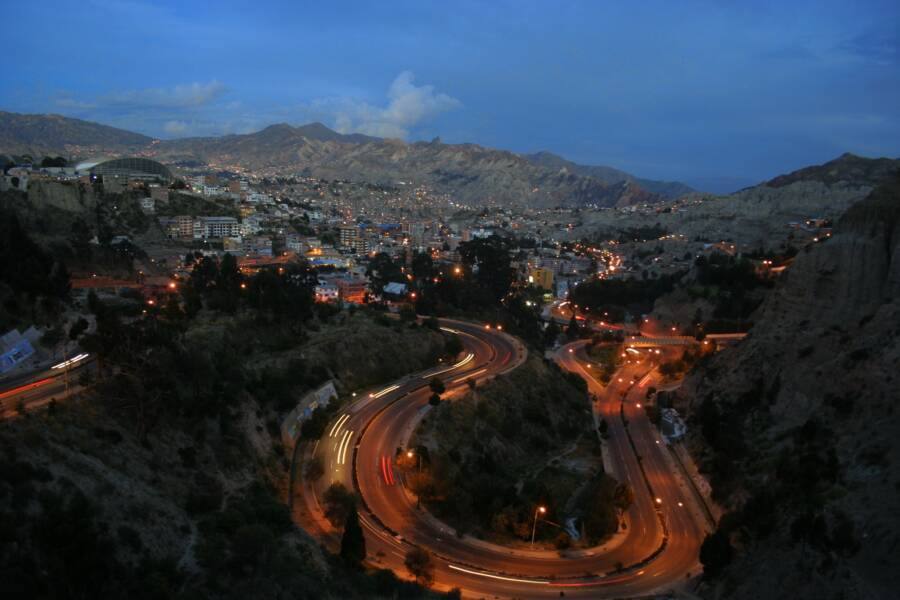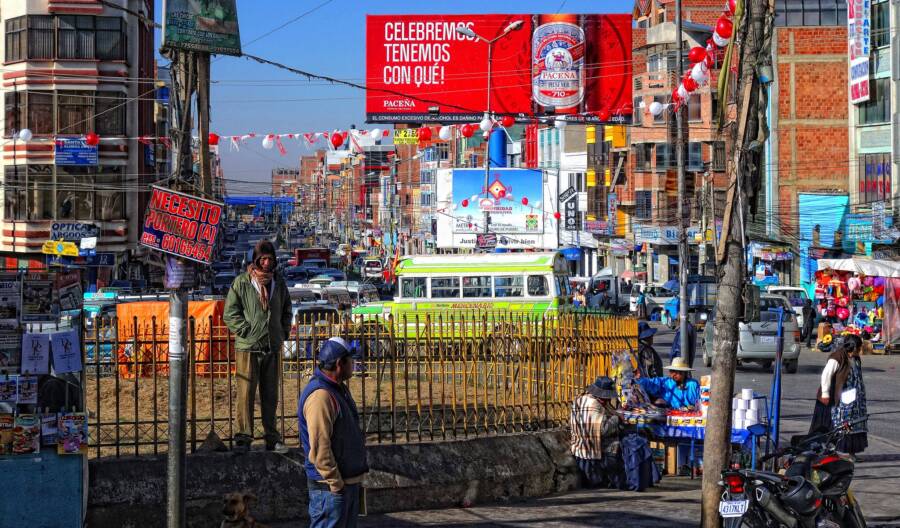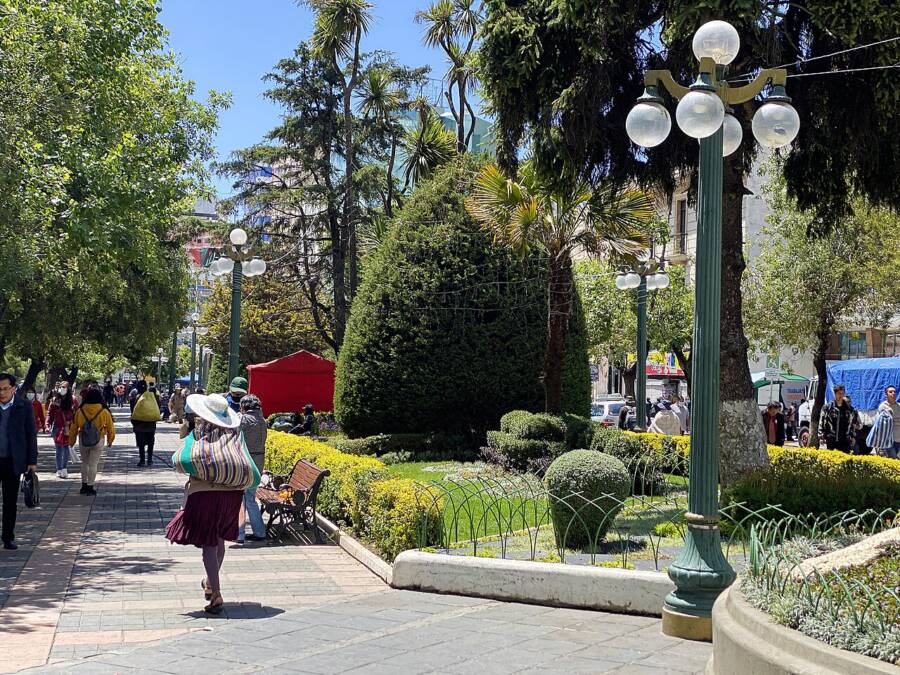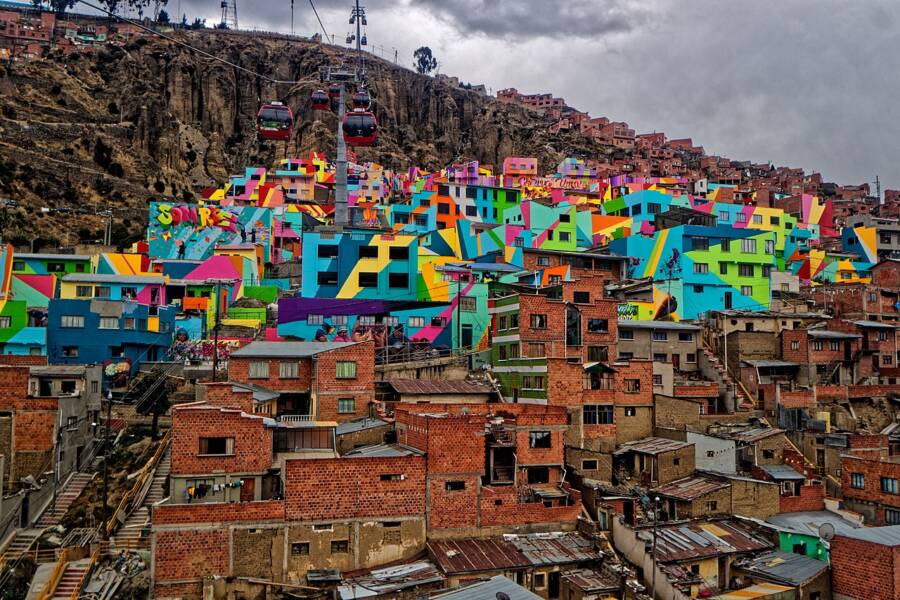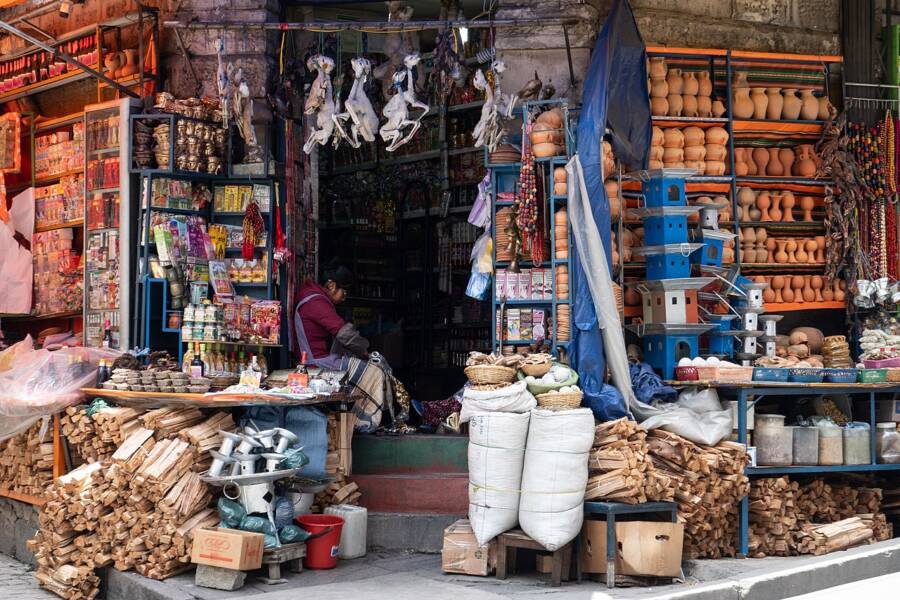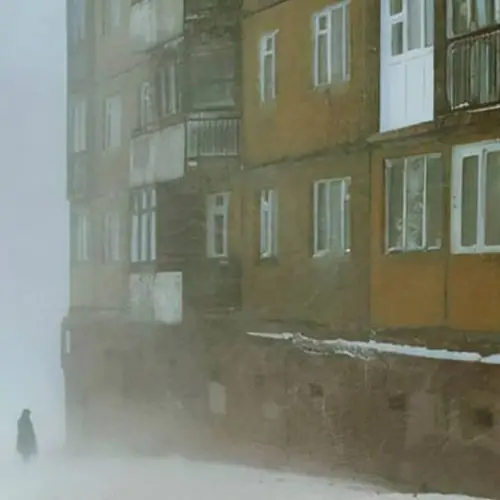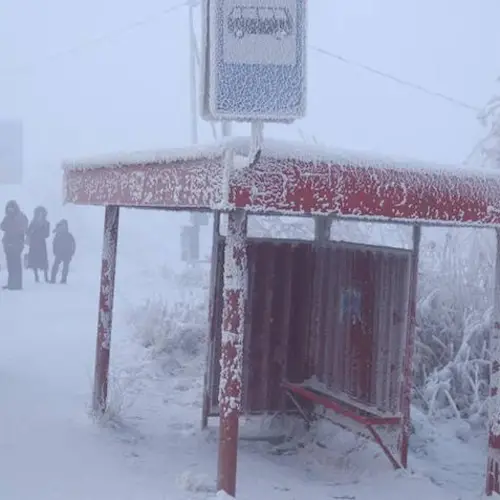At 12,000 feet above sea level, La Paz, Bolivia is considered the highest city in the world — but living at such a high altitude can come with its challenges.
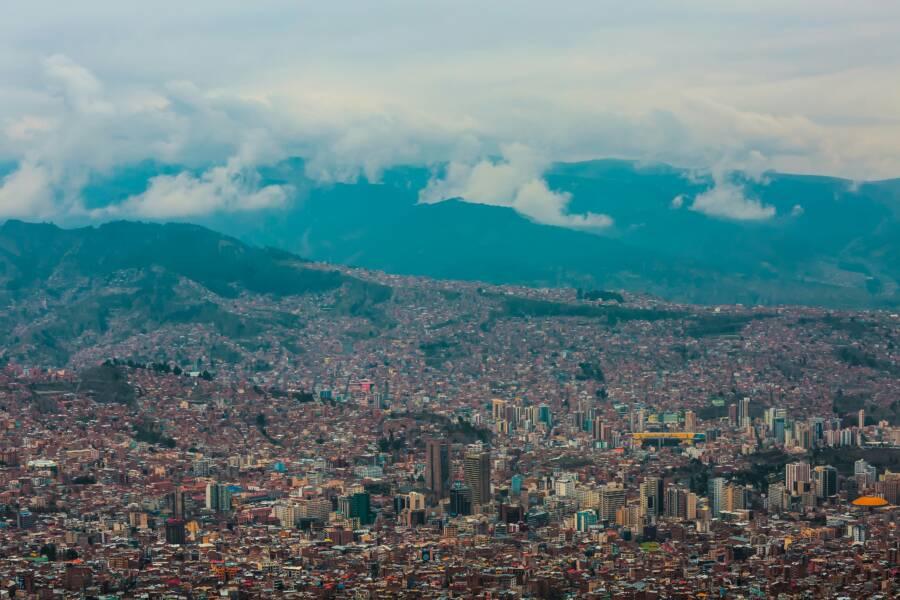
UnsplashView of La Paz, Bolivia, the highest city in the world.
Nestled in the heart of the Bolivian Andes, La Paz, Bolivia, is the highest city in the world. La Paz’s altitude is at an impressive 12,000 feet above sea level, meaning that this Bolivian city soars above the clouds.
This captivating city, surrounded by towering mountains and steep valleys, boasts a rich history that spans thousands of years. Over time, La Paz has become a thriving cultural and economic hub known for its unique geography, art, and iconic nightlife.
Despite its challenging geography, La Paz continues to flourish, offering a unique blend of tradition and modern development.
The Early History Of The Highest City In The World
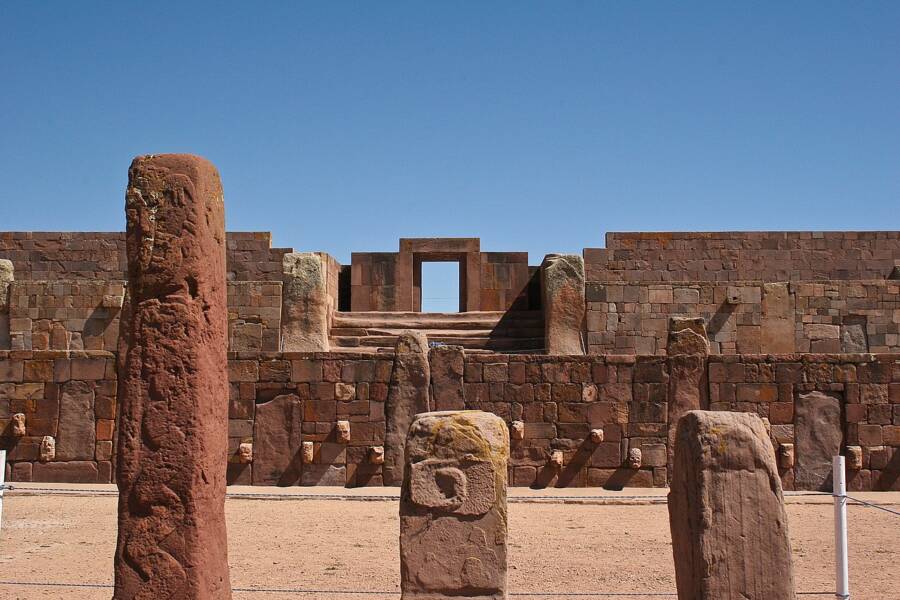
Wikimedia Commons/CC BY 2.0Remnants of Kalasasaya Temple, a creation of the pre-Hispanic Tiwanaku civilization who lived near La Paz.
The history of human civilization La Paz dates back thousands of years — the exact timeline is debated — and the region was initially inhabited by the Aymara people. In 400 C.E., the Tiahuanaco Empire, known for its ceramics, religious structures, and advanced agriculture, also rose to prominence nearby. The empire flourished until around 1000 C.E., and as the Incas rose in the 15th century, the area saw the building of roadways and gold mines.
After the Spanish arrived in the 16th century, the Incan empire quickly collapsed. On October 20, 1548, Spanish conquistador Alonso de Mendoza founded the city of La Paz on the site of a former Inca settlement, calling it "Nuestra Señora de La Paz," or "Our Lady of Peace."
In 1555, King Charles I of Spain granted the city its own coat of arms — making it an official Spanish city in the New World. Spanish control of the city and the rest of Bolivia remained steady until the 19th century, when Pedro Domingo Murillo, a Creole resistance leader, led a rebellion against Spain. His campaign against the Spanish was unsuccessful, and he was hanged in 1810. Bolivia gained independence from Spain 15 years later, and the name of the city was changed to "La Paz de Ayacucho."
La Paz eventually rose to greater prominence over other key Bolivian cities like Potosi and Sucre, both economic powerhouses. In 1898, La Paz became the de facto seat of Bolivia's government following armed conflicts between factions vying for different administrative capitals. Today, it is the country's administrative capital, while Sucre is the constitutional capital.
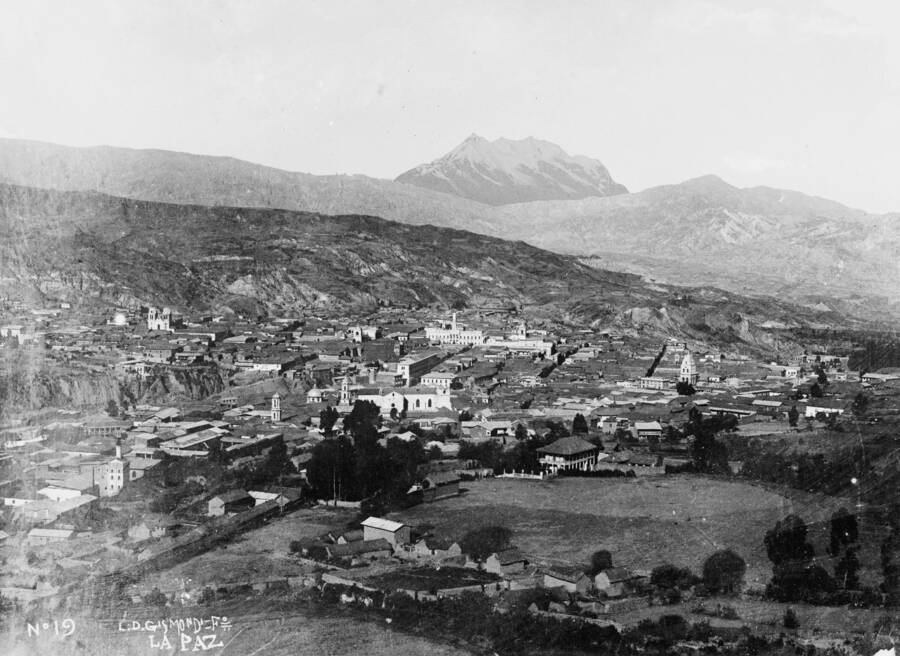
Wikimedia Commons/CC BY-SA 4.0A photo of La Paz taken in the late 1920s.
And over the years, La Paz has flourished into a vibrant South American city — one that just happens to be the highest city in the world.
The Colorful Culture Of La Paz, The Highest City In The World
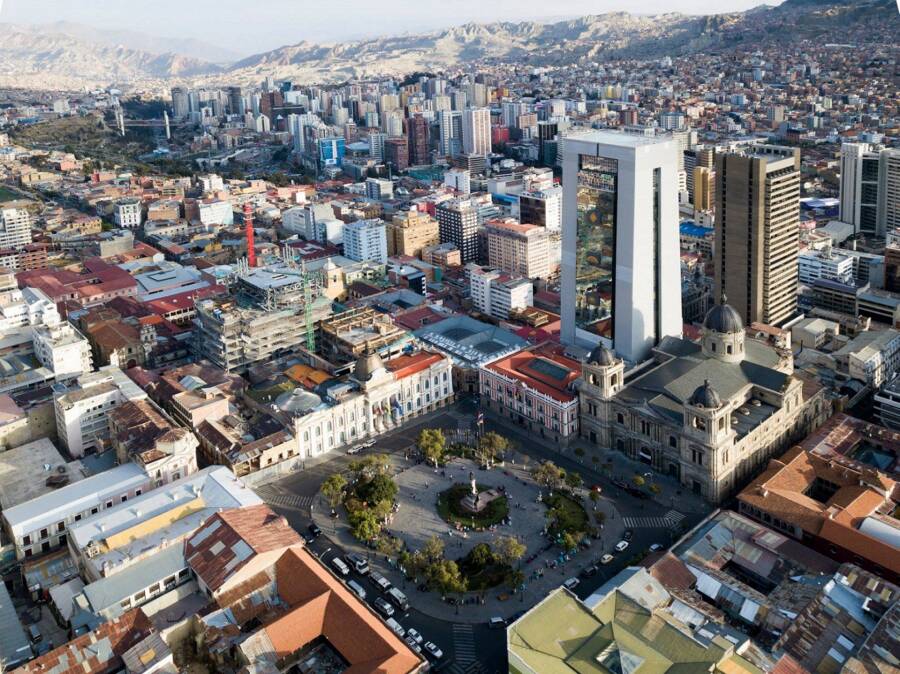
Wikimedia Commons/CC BY-SA 4.0A central plaza in La Paz.
Today, La Paz has a metropolitan area that's home to almost two million people. It is the country's third most populous city and only continues to grow in size as more people arrive from the countryside to urban centers.
While Bolivia is one of South America's poorest countries, the city of La Paz has seen rapid economic growth, particularly due to the rise of businesses. But the highest city in the world is socially stratified, with the wealthy living in high rises in the center, the middle class living in surrounding neighborhoods, and the poor residing on the city's mountainous slopes.
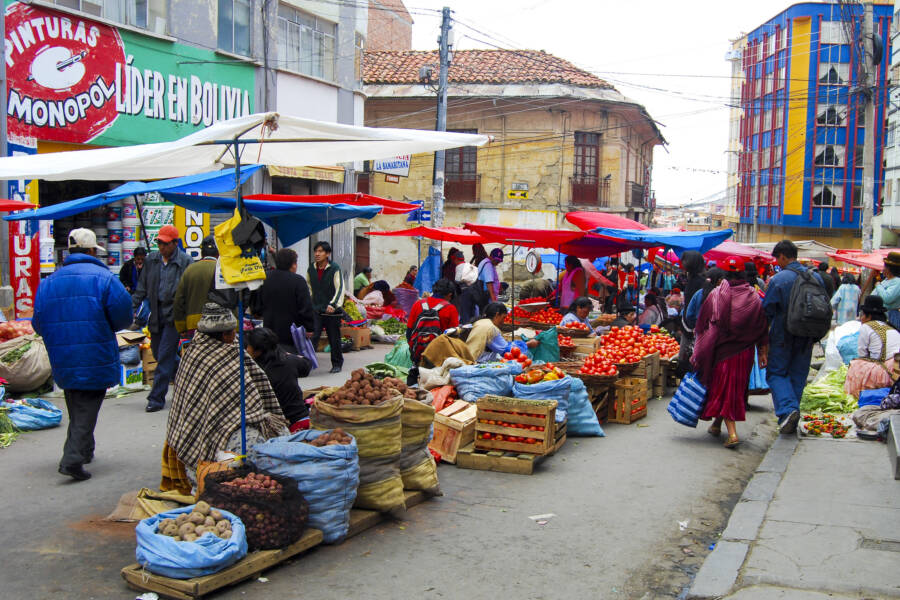
Göran Höglund/FlickrA fruit market in the middle of a street.
Visitors to the city will find business owners manning their shops along busy streets. The city is famous for its markets — especially the Witches' Market run by local witch doctors — textile industry, and lively nightlife, as well as its cable car system, which is the longest urban cable car in the world.
Tourists also flock to Jaén Street, an alley in La Paz that has remained largely unchanged since the colonial era, giving visitors a chance to take a stroll back in time. Other areas, like Sopocachi and Chullauma, are frequently visited for their vibrant colorful buildings.
The Impact Of Living At The Altitude Of La Paz
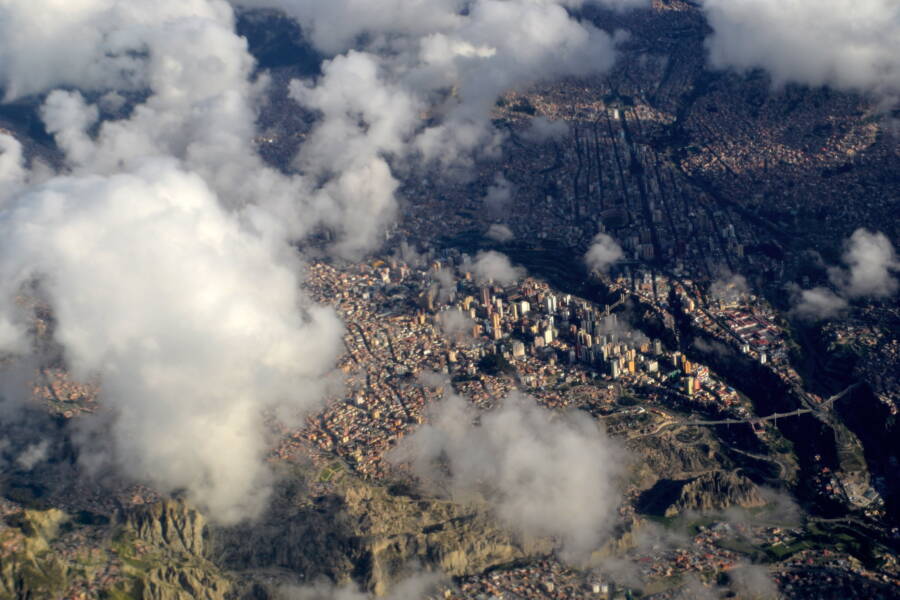
Pablo Andrés Rivero/FlickrAn aerial view of the city.
La Paz's altitude makes it unlike any other urban center on Earth. Its unique geography has shaped the city's layout and presented specific challenges to those who call it home.
The city is located inside a geological depression, tucked away between the Cordillera Real mountains and the Bolivian Altiplano. Because it is at the very edge of the valley, the city experiences very mild weather — a stark contrast to the temperamental conditions farther north.
Between December and April, the city experiences its rainy season, getting an average of 22 inches of rain a year. Because of its location in the Southern Hemisphere, Bolivia's winter season is in the later half of the year, with the coldest weather occurring in June and July. The average temperature in the city is roughly 60 degrees, with temperatures reaching as high as 72 degrees.
Despite its weather being mild relative to other nearby areas, La Paz still experiences its handful of devastating weather conditions. The city is particularly prone to flooding. Just this year, 17 people died and 500 homes were destroyed following intense rains and flooding in January. This occurred just months after heavy rains sent mudslides pouring into neighborhoods of La Paz, destroying dozens of homes and displacing hundreds of families.
Outside of the rainy season, La Paz experiences plenty of sunshine and mild weather. The city receives an average of eight hours of sun a day in winter — not bad for a city in the clouds.
As for how living in the highest city in the world has affected the city's residents, there is very little research into how La Paz's altitude impacts people long term. Many of the city's residents have adapted to the high altitude due to generations of exposure, but tourists may struggle with altitude sickness, a temporary illness that develops due to the body's inability to quickly adjust to lower oxygen levels.
But for locals and tourists alike, walking the streets of the highest city in the world is often worth any downside.
After reading about the highest city in the world, dive into 11 of the hottest places on Earth. Then, read about 13 sunken cities from around the globe.
